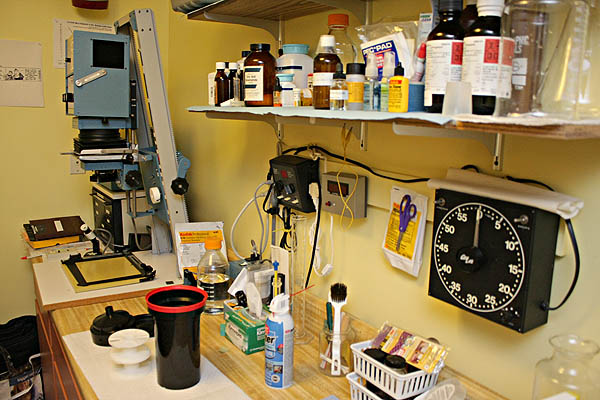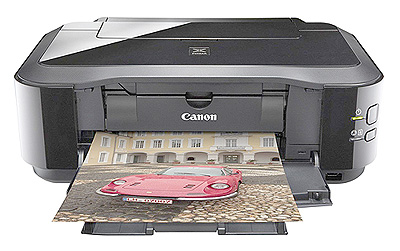 |
|
 |
2011
December
30-31
|
What is Christmas, and is it under attack?
As a Christian, I'm strongly in favor of keeping Christ in Christmas.
But people who talk about keeping Christ in Christmas often make confused arguments
and ignore an obvious fact.
That obvious fact is that, in our society,
there are two separate celebrations going on.
One of them is the Feast of the Nativity of Jesus Christ.
The other is a children's toy festival.
The toy festival is distantly traceable to St. Nicholas, who made anonymous gifts to poor
children, but it has no religious content. (Nicholas' philanthropy can be admired by anyone.)
More immediately, the toy festival expanded greatly in the early 1950s, and I think it has some very good elements.
My parents' generation, the people who had stared down both the Great Depression and Hitler,
were happy to bring children into a world in which both of those evils had been vanquished.
They were determined to treat those children better than any children had ever been treated before.
Thus, lavish gifts at Christmas.
The toy festival is thus a victory celebration, and although it can go overboard, I think it is
inherently a legitimate and good thing.
When Christians complain that Christmas has become too commercialized, some of them mean (1) and some mean (2):
(1) That the toy festival should be abolished so that all that is left is the Nativity; or
(2) That the toy festival is too much driven by merchants and should be more family-oriented, an expression
of parents' love for their children.
Consider the conflict that some Jewish people feel at Christmas.
Many of them see nothing wrong with the toy festival, and, indeed, many of them are
involved in it as merchants. But they do not celebrate Christian religious holidays.
This conflict is what led to circumlocutions like "Holiday tree" and "Holiday presents."
Some people try to combine the toy festival and the Nativity,
but that only goes so far. Yes, every childbirth is a reminder
of the Incarnation. Yes, the Wise Men gave gifts to Jesus — but they didn't give gifts to anyone else,
and they didn't take requests at the mall. And no matter how you slice it, a Christmas tree is not a
Christian religious symbol. It is a European winter decoration.
And it is all too easy for American Protestants to imagine a past golden age that didn't happen.
What was Christmas in 1820 or even 1920? A Norman Rockwell picture?
No, it was a very minor holiday! Neither the religious celebration nor
the toy festival had really gotten off the ground. A lot of businesses were open as usual on
December 25, 1923, which happens to be the patent date for one type of glass Coke bottle.
For Catholics and Orthodox Christians, of course,
Christmas, preceded by Advent, has long been a somewhat bigger deal, but
still not the highest holy day — that is Easter.
What's a Christian to do? I know I'm going to upset some people by saying this, but
I don't think we should be trying to wipe out a well-intentioned secular celebration
that happens to have gotten mixed up with our Feast of the Nativity.
Rather, we should be making sure we (and our children) understand the difference.
And I'm certainly in favor of a less commercial Christmas, not because excessive commercialism
is a deliberate attack on Christ (it isn't), but because it's an attack on prudence and common sense.
[Update:] A correspondent points out that there is also another secular festival going on,
somewhat mixed with the two that I mentioned, and somewhat vaguer in its definition:
Christmas-New Year's is also a traditional time for family reunions and acts of charity toward
the less fortunate. I see nothing wrong with this at all, so long as Christians don't think
it's a complete substitute for celebrating the Nativity.
We must, of course, guard against the notion that a vague warm feeling is all that Jesus is about.
Permanent link to this entry


|
2011
December
29
|
How not to get scammed on the Internet
The following advice is applicable to the whole Internet, but particularly to Facebook users.
I'm putting it here so I can refer people to it. Please spread the word.
A few quick notes on how not to get scammed:
(1) Don't click on links that say "this is amazing, you've got to see this" (or similar words) but don't say what "this" is.
(2) Don't click on links that say something (iPads, gift cards, etc.) is being given away free. Don't believe anybody who
says you've won a lottery that you didn't enter, or received an inheritance from someone you've never heard of.
(3) Don't click on links that promise to do something to your computer, such as remove a virus.
(4) Before you click on a link, put the mouse cursor over it and look at the lower left corner of your
screen to see where the link goes. If it's not what it claims to be, don't click.
(5) Never give your user name and password to ANYBODY who asks for it (or tells you to e-mail it or enter it on a special web page)
no matter who they claim to be. Not even the police or the FBI or the management of the computer system.
(6) Remember that messages apparently posted or e-mailed by your friends may be fake.
If something has your friend's name on it but reads like an advertisement or teaser —
doesn't actually seem to be in your friend's own words — then don't trust it,
especially if it says, essentially, "Click on this," and doesn't say why.
(7) Don't forward e-mails or share things on Facebook just because they say to.
Nobody will get money, or prizes, or even a free heart transplant just because other
people forward or share something that they don't really know anything about.
Don't put YOUR name on anything unless YOU can take FULL responsibility for what it says.
I hope none of this came as a substantial surprise to any of you!
Everybody on the Internet needs to be smart enough to question what they see on the screen.
If you believe everything you see, without any critical thinking, you're not safe.
Permanent link to this entry


|
2011
December
27-28
|
Photography lives on as an artists' medium
[Updated.]
I'm too busy to write much — lots of visiting with family members and old friends — but here's a short note.
There are encouraging signs about how traditional black-and-white photography is living on as an artists' medium.
Specifically, Ilford is introducing some intriguing new products
such as direct positive
paper for pinhole cameras,
as well as keeping conventional black-and-white film, paper, and chemicals available.
I think that if you what you need is pictures, film is dead.
It is not the best way to produce pictures for illustration, journalism, or portraiture.
But just as oil paint didn't die out when it ceased to be the best way to make full-toned, long-lasting pictures,
film isn't dying either. Color film may die, because it is tricky to make, and the results have never
been all that great. (Did you notice that digital images have better color?) But black-and-white film
is closely related to light-sensitive processes used in the printing industry, so it's not too hard to keep it alive
as long as there's a market. And the market seems healthy. It consists of people who use it as an art form
or to preserve a traditional craft.
(Let me explain what I said about the printing industry. When you're printing 10,000 copies of a book or pamphlet,
you don't run them off on a laser printer. It's much cheaper to make an aluminum lithographic plate and use an
offset press to print them with ink. The plate is made by a photo-etching process with chemistry
closely related to black-and-white photography. If we ever stop printing on paper in large quantities,
there are still a handful of other industrial processes that use
light-sensitive coatings — essentially, black-and-white photography — to
transfer patterns or designs from one material to another.
One of them is the manufacture of computer chips.
That is why I don't think film will die as long as anyone has
any desire for it.)
It appears that Kodak is not long for this world. Ilford, however, has bounced back and claimed a niche as a supplier
of artists' materials.
Permanent link to this entry


|
2011
December
26
|
My darkroom was missing me...

My darkroom was missing me, or perhaps I was missing it, so as a Christmas present
to it and to myself, I spent the day in doing darkroom work.
This was, as far as I know, the first enlarging session since 2006, although
a few individual rolls of film were developed as late as 2008 (and were still
hanging up to dry!).
Job 1 was to test all the materials. (I'm going to write a magazine article about
how to do this.) My Kodak HC-110 Developer, decanted into full glass bottles when I bought
it in 2006, was in perfect condition. Surprisingly, an unopened bottle of Ilford print
developer of the same era also worked fine. The Ilford Rapid Fixer from 2006 was precipitating
sulfur, and although I might have been able to use it after repeated filtration, I used some
that I bought in 2010 when I thought I was about to do darkroom work.
Paper is very abundant because both Sharon
and Cathy had leftover materials from art courses they took in high school and college respectively,
both around 2006.
So I've finally developed the test rolls of film that were exposed with my Petri 7 and
my Olympus OM-1 when each of them came back from repair (in, I think, 2008 and 2009).
And I've made contact sheets and a few enlargements.

Darkroom work is fun when you don't have to produce astronomical images. Astrophotographic
darkroom work
is extremely picky because contrast is high, exposures are critical, and dust specks are
absolutely intolerable. Darkroom work for nature photography is much less demanding.
Two things tie me to my darkroom. First, it's extensively customized — it really is something
I built for myself, with numerous minor adjustments to smooth every step in the workflow.
I even use an enlarging exposure meter of my own design and construction.
Second, it's one of the few things in my life that have been the same since before 2000.
The darkroom grew very slowly from about 1980 to 2000 and has had no significant
upgrades since then.
Everything else that I've done — career, family, even astrophotography and
electronics hobbies — has undergone major metamorphoses.
I thank Melody and Sharon for letting me spend Christmas Day this way.
They did extra chores to give me free time.
Permanent link to this entry


|
2011
December
25
|
Feast Day of the Nativity of Our Lord
In many ways and at many times
God spoke to our forefathers long ago
through the prophets.
Now, in these last days,
He has spoken to us through His Son,
whom He appointed heir of all things,
and through whom He made the universe.
Hebrews 1:1-2
|
We wish you and yours a merry Christmas and a blessed New Year!
Permanent link to this entry


|
2011
December
24
|
Astronomy and the Star of Bethlehem
What little I know about the Star of Bethlehem,
from an astronomical point of view,
is at this link
(with links to subsequent updates).
I don't claim to be an expert on this subject.
Merry Christmas to all!
Permanent link to this entry


|
2011
December
23
(Extra #2)
|
Canon printers and Kodak paper
The word on the Web, and also my initial experience, is that Canon inkjet
printers don't work well with Kodak paper. But wait a moment...
Using my new, cheap, Canon iP4920 with Kodak Ultima Photo Paper (vintage 2004),
I got good color but very uneven gloss. Wherever the printer put down a lot of ink,
the glossy sheen was impaired. If the picture was low-key (dark all over), the glossy
surface had an uneven mottle.
So I gave up on Kodak paper, bought some Epson glossy paper, and got great results.
The gloss was perfect all over. Problem solved. Goodbye, Kodak.
But then the plot thickened. I tried a fresh sample pack of Kodak Professional Photo Paper,
F Surface, and the results were good. To my taste, compared to Epson, I got slightly better
color, and slightly less gloss, but no unevenness. Heavily inked areas were just as shiny
as lightly inked areas.
Then I opened up a package of Kodak Premium Photo Paper, vintage 2002 (!) which had
been sealed until now. And the results were nearly as good. There was some
unevenness in the gloss in heavily inked areas. But not a lot.
So now I wonder: was the problem with my Ultima paper simply that the package had been
open for several years? I have another box of the same material that is still sealed.
I wonder...
The bottom line: Current-production Kodak Professional paper works fine with Canon printers.
Other current-production Kodak papers probably do as well. With this printer,
all the Kodak papers have the same color balance,
which is slightly less red than Epson paper.
Note numerous updates to recent entries, set in dark red type like this.
Permanent link to this entry


|
2011
December
23
(Extra)
|
What a set of incentives!
[Revised.]
According to
The Wall Street Journal
(quoted by Greg Mankiw),
presidential hopeful Ron Paul has an odd set of investments.
He invests in gold and silver mining stocks and (a little) in "short" stock funds (funds that sell borrowed stocks, making money
only if the price of the stock goes down during the interval).
That means he stands to get rich, or at least preserve his wealth,
if the stock market crashes and there is a calamitous loss of confidence in the dollar.
Do you see a potential conflict of interest there? I would rather have a president whose investments
are in line with the overall best interests of the country, rather than one who is betting on a collapse.
Apparently I've hit a sore spot with gold-standard advocates.
This entry, and its counterpart of Facebook, triggered a flurry of critical responses.
Plenty of people told me what I already knew, that the president's investments go into a blind trust
when he takes office. But what he invests in before he takes office tells me what he is expecting and relying on.
Permanent link to this entry


|
2011
December
23
|
A warm start to winter
Happy first day of winter! Here, winter came in with 70-degree (21 C) weather,
heavy rain, and thunderstorms.
I'm worried. Usually, this foreshadows heavy snow within a few weeks.
Look at several updates to recent entries on this page.
Permanent link to this entry


|
2011
December
22
|
Maybe some people shouldn't have credit cards
I support the proposal to
limit
credit-card interest rates
even though I know it will create a shortage of credit cards.
Price controls always create shortages.
In this case I think the shortage is desirable.
I'd like to see banks get back to the old-fashioned notion that credit has to be earned.
Right now, the prevailing theory is that there is some interest rate at which you can lend to anyone because
the interest rate covers the risk of non-repayment.
I think that if the risk is too high, you simply ought not to be lending money.
Soaking up large portions of poor people's income in high interest charges is not a good thing to do to them.
(An interest-rate limit might also give banks an incentive to determine more accurately whether the borrower
can repay the loan or not — rather than just lending indiscriminately and charging high interest rates.
And that might loosen FICO's grip on moneylending in America.)
By the way, I know that what I've proposed goes counter to the free market. I believe in free markets; they can work wonders.
But I am not against all regulation. Even if, theoretically, the free market can solve a problem, sometimes regulation can
solve it faster. Also, I think credit cards are, to some extent, a cartel — they all act too much alike.
[Update:] A correspondent points out that the high interest rates allow banks to write off larger "losses" when these
bills go unpaid. That is, they may be deliberately inflating debts that they think are unlikely to be paid
in order to show a larger loss on paper. This is not quite honest and is certainly no excuse for burdening the
people who actually make the payments.
Permanent link to this entry


|
2011
December
20-21
|
The new "culture of thrift" didn't catch on
Sadly, the data are now in, and they tell us that Americans
didn't
learn anything from the recent hard times.
(See also this.)
Although consumer credit card debt has diminished, the reduction was almost entirely due to banks writing debts off as
uncollectable rather than consumers paying it off. In fact, the amount of debt reduction may have been less
than the total of the writeoffs, indicating people are actually getting deeper in the hole.
Meanwhile, I hear bitter complaining that we are still in a killer recession —
but the shopping center parking lots are full to overflowing.
Permanent link to this entry
Automotive controversy — transmission fluid change
Ford says to change the transmission fluid and filter in our Taurus at 150,000 miles,
or every 30,000 miles in severe service.
I'm startled by the factor-of-5 difference. I would have believed a factor of 2 or
maybe 3.
So, after quizzing a lot of experts, I'm going to go ahead and do the fluid and filter
change soon, at about 110,000 miles. This car is no spring chicken, and arguably, short
trips around town constitute severe service.
What muddies the water is that many people (including me) have had the experience that
if you flush the transmission on a car that is already having transmission trouble,
things are likely to get worse. That makes them afraid to do it at all.
[Update:]
Another thing that muddies the water is that, reportedly, it is not uncommon for the wrong
kind of transmission fluid to be put in after a change.
This could be the source of some horror stories.
There are quite a few kinds of automatic transmission fluid
(a 2012 Ford is even different from a 2004 Ford),
and I'm inclined to be wary of claims that a third-party product meets more than one specification, unless they're
really well backed-up. Having said that, I should point out that Ford, GM, etc., do not actually make their own
oils and fluids. So there is sure to be some third-party brand that is perfectly authentic.
Incidentally, the popular BG "flush" is not a power flush — it's a complete fluid
exchange using the car's own pump at normal pressure.
If you're sure I'm about to ruin a car (or if you want to place bets), please speak up!
Permanent link to this entry


|
2011
December
19
|
Southeast Athens no longer stinks
Having driven around the southeast side of the Athens Perimeter the other day,
I am proud to report that, for the first time in about seven years, the east side
of town no longer smells like sewage.
We have had a foul smell from an inadequate sewage processing plant for that long.
Entire generations of UGA students have had to endure the stench around their East Campus dorms.
Various excuses were made, but as far as I'm concerned, the smell was equivalent to a large
billboard saying, "We are incompetent." A properly managed city government would have treated
the foul smell as an emergency, to be abated as soon as humanly possible,
and would have cut spending on non-essentials (such as public artwork) in order to do it.
Instead, part of our
town had to endure the smell for six or seven years.
There was also, in my opinion, an element of environmental racism involved.
The worst-hit area was a poor, predominantly black neighborhood.
Maybe someone wanted the area "cleared out."
Permanent link to this entry


|
2011
December
18
|
Car stuck in Park?
I put this on the Web so I could link to it from a conversation I was having in a forum,
but there's no reason you shouldn't see it too.
Here's what to do if your late-model Ford won't shift out of Park.
As I understand it, very similar procedures apply to a lot of other vehicles —
there's a tab or a button, possibly hidden.
And no, this didn't happen to my new Ford.
But I once did encounter it in a Volvo.

This may be my most boring Notebook entry yet, unless your car happens to be stuck in Park!
Permanent link to this entry


|
2011
December
17
|
A feat of engineering

Now that the liability claim has been settled, I can show you why my front yard had to be
dug up on November 23.
The sewer was obstructed — by tree roots, we thought — but the plumbers found something
they couldn't chop up with their tree root chopper. They thought it was a collapsed pipe.
After considerable digging, they unearthed what you see here.
The white pipe is the sewer, which was in use. None of it was chopped away for the picture;
you're looking at exactly what we were using, complete with big holes.
The black pipe contains Georgia Power's underground power cable for a substantial part of the neighborhood.
They installed it with a machine that bores horizontally through clay, rocks, and (as it turned out)
sewer pipes.
To fix it, the plumbers ran a new sewer above the original one.
Then Georgia Power paid to have a substantial part of the front yard re-landscaped.
Permanent link to this entry


|
2011
December
16
|
Frugality leads to sudden purchases
Recommended: Canon Speedlite 430 EX II
Recommended: Canon Pixma iP4920 printer
[Revised.]


Click on the picture to view each product on Amazon
Frugal money management can lead to sudden purchases — not because one's will power breaks down,
but because the purchase, contemplated long in advance, is not actually made until the immediate need arises.
So it was that I bought two pieces of Canon photographic hardware on rather short notice this month.
Both have been quite pleasing to work with.
The Canon Speedlite 430 EX II is a
flash that I use on top of my Canon EOS 40D or other DSLRs. It swivels to bounce off the ceiling (for very natural
light) or to aim directly at the subject. In the latter case it automatically zooms to match the field of view of the lens.
For really good pictures I put a Lumiquest
Pocket Bouncer on it.
This may be the first flash I've ever had that produced really accurate exposures.
I haven't explored its technical features. I put it on the camera and it worked reliably. That's all I could really ask.
But I should finish reading Bob Atkins' guide
to Canon flash technology. It explains the complicated things these flashes do!
Long ago I wrote my own
guide to using non-Canon flashes with Canon DSLRs.
I am happy to report that the 6-volt limit mentioned there has been raised to 250 in some newer DSLRs (see Atkins).
The Canon Pixma iP4920 is
Canon's cheapest photo quality inkjet printer, purchased as a replacement for my 8-year-old Epson, which has suffered
some damage to the print head. (I gave away the Epson; it still works well enough for non-photographic printing.)
The Canon was easy to set up, and in early results, seems to produce very high quality.
That's not so much Canon beating Epson as 2011 beating 2003.
And it's all the more remarkable because the price was under $89, delivered.
You can think of that as $65 worth of ink cartridges with a printer wrapped around them.
Hint #1: When making a high-quality print, you should already have a piece of paper of the same size —
plain paper is OK — in the output tray, to support the print as it comes out.
Hint #2: [Updated Dec. 17. Thanks to Pat Quarterman
for information.] Use Canon or Epson glossy paper for the highest-quality prints.
Other papers do not absorb all the ink and do not give an even glossy surface.
I have had somewhat imperfect results with Ilford Galerie and quite disappointing results
with Kodak Ultima paper that was several years old. Kodak's current top-of-the-line paper
may be better; I don't know Moab paper also comes highly recommended, but I haven't tried it.
[Further update: Click here for more of the story.]
Permanent link to this entry


|
2011
December
15
|
Repurposing Facebook
When I first joined Facebook, I figured it was largely a way to publicize my books, and I accepted
friend requests indiscriminately from astronomy enthusiasts all over the world.
But I also reconnected with a number of hometown friends — some of whom are quite extraordinary people —
and this has been richly rewarding.
I also found Facebook to be an efficient way to keep up with extended family members.
Gradually I became uneasy talking to close friends and family amid a crowd of total strangers.
Facebook's group system helped somewhat, but I never mastered it.
To forestall the friends list from turning into an astronomy club,
I set up a separate Facebook page for my astronomy books
and have been trying to redirect the book fans there.
Also, I'm finding that I simply don't have time for the amount of conversation that such an
intelligent and lively group of people want to have. I can't devote an hour to answering questions
and fending off rebuttal every time I post an opinion. Not only is my friends list not a public forum,
I don't have time to conduct a salon all day and all evening.
So now I'm taking a bigger step toward repurposing Facebook. I've trimmed down my friends list
so that it only includes people I actually know. (It is a private, not a public forum.)
I'm greatly reducing the amount of time I spend on
Facebook. And I'm redirecting my Facebook readers here, to the Daily Notebook. This is where I supply
reading matter to the world.
Thank you all for your support!
Permanent link to this entry


|
2011
December
13-14
|
Jupiter


Here are infrared and visible-light images of Jupiter on the evening of the 13th,
with the Great Red Spot prominent. Both were taken with my 8-inch telescope.
Each is a stack of the best 2500 of about 3000 video frames.
Permanent link to this entry


|
2011
December
11-12
|
I've been writing...
I've been writing prolifically these past few days.
My set of tutorials on the R statistical software package
has been expanded. Click here to see them.
If you are writing a thesis or scholarly paper and want to include
pictures (photos or diagrams) as illustrations,
using Word or LaTeX, click here.
(Page 6 may amuse you.)
And if you happen to want a
worked example of Latent Semantic Indexing,
showing all the matrix arithmetic so that you can understand it and even
check your own implementation, click here.
This will probably be revised and extended, and the revisions will take
place here.
Permanent link to this entry
Short notes
Farewell, Epson: After just eight years, my Epson Stylus Photo R300 printer is no longer fit
for photo-quality work. There has been some kind of damage to one of the print heads.
I'm giving it to Goodwill (since it's still OK for non-critical printing) and am going to get a
low-end Canon Pixma, which will cost $88 delivered, including about $60 worth of ink. Not bad...
A more musical time: My Ford Escape has a Sirius satellite radio receiver, and the
best thing about it is that the two classical channels actually play classical music, not
political commentary or appeals for money. One of the two, the one that plays shorter pieces,
has been giving us a lot of Cambridge Christmas music (from Clare College and its next-door neighbor,
the one with the big chapel).
This means I spend far less time listening to local commercials, popular music, or economic
commentaries and call-in shows. (I had already totally ruled out political talk shows; what
they say is all too often simply false, and I'm not in a position to spot the errors.
Economic errors don't get by me so easily.)
So I'm left alone with good music and my own thoughts — a more civilized way of life.
Permanent link to this entry


|
2011
December
9-10
|
Happy Holly-day!

We have a new family member. More precisely, Sharon has a new puppy, which
(to our amazement) arrived housebroken and crate-trained. (Does that take all
the challenge out of it?)
Her name is, of course, Holly.
Permanent link to this entry
Learn how to use R
My main achievement of the day was adding this to my UGA web page
(the links work here, too):
The R statistical software package
I've written three tutorials about the R statistical software package,
for the edification of my students.
Permanent link to this entry


|
2011
December
5-8
|
My integrity is not for sale
Today I was contacted by an advertising agent wanting to put an ad on one of my web pages.
The ad was for a service that I have actually said good things about; so it passed the first
hurdle — it was an ad I would be willing to run.
The catch is, they didn't want it to look like an ad. They didn't want me to put "[Advertisement]"
or anything like that in front of it. They wanted it to be a "recommendation." That is, they
were going to pay me to recommend something.
The reason was mainly to fool search engines, which don't index ads. But it would also deceive
human beings. The rule I follow is that if readers won't recognize that something is a paid ad,
it can't be a paid ad.
I may be an old grouch, but I'm a scrupulously honest one.
Permanent link to this entry


|
| |
|
2011
December
4
|
Late-model Ford audio systems with
inoperative Sync and Aux (Line In)
and/or no DC power at USB port
OK, this is another automotive troubleshooting episode.
Although I haven't activated Microsoft Sync (which puts the vehicle on the
Internet through a Bluetooth cell phone), I use the USB port in my 2012 Ford Escape
to charge an iPod. Recently it came to my attention that it was no longer doing that.
Nor would it power a USB keyboard lamp. And the Aux button no longer selected Line In;
instead, it selected AM radio. It's as if the complete Sync system had disappeared.
I've found many reports on line that
the Sync system will sometimes hang turned off,
and to reset it, you remove its fuse (which is fuse 3 on the 2012 Escape,
not the same as the radio fuse)
and put the fuse back in half a minute later. Obviously a blown fuse will also cause
the same symptoms. In my case I dropped the original fuse and lost it before
I could test it, so I had to put
in a new fuse.
There's a trick to it. Sync won't come back to life until you actually start the engine.
That apparently reboots it. Changing the fuse and turning the car on to "acc" wasn't enough.
The USB port has power when the engine is running, and, apparently, for some time afterward if
it is actually charging something at the time the engine shuts off. I haven't sorted out
how all of this works. But it presents abundant opportunities for confusion, since it is not
the same as the time the radio can stay on after the engine shuts off.
On my 2012 Escape, the 12-volt power socket is energized all the time.
That's probably where I'll charge my iPod from now on.
Permanent link to this entry


|
2011
December
3
|
Jupiter and 3 satellites

Click picture to enlarge
Here's another surprisingly good Jupiter image — same setup as before — and this time I may
have captured surface detail on Ganymede and Callisto. (I'm not sure; the fact that it is similar on the
two of them suggests it might be a stacking artifact.) In the picture, the area of Callisto has been lightened
relative to the rest, because Callisto is relatively dark.
Same setup as last time. Best 2500 out of about 3300 video frames, stacked, aligned, and sharpened.
Permanent link to this entry


|
2011
December
2
|
Jupiter

This may be my best Jupiter image yet, and it has actually been enlarged from the
pixels that actually came out of the camera. (I can rarely get away with that.)
Taken on the evening of December 1 with my 8-inch telescope, 3x Barlow lens,
and DFK camera; best 2500 out of 3000 frames of video taken at 30 fps and thus
comprising less than two minutes.
Permanent link to this entry
The mathematics of happy marriages
Here is something that came up in a student's oral examination the other day.
It's from the area of mathematics called combinatorics, the study of how
to arrange things into pairs or groups.
The situation that I'm going to talk about could arise when people get married,
or when employees are paired up with job openings, or students with graduate schools,
or several other things. For simplicity I'll just apply it to marriage.
Imagine a number of men and an equal number of women.
Each of them has a preference list.
That is, each of the men can list all the women in order, from the one
he considers most desirable to the least desirable.
Each of the women can do the same for all the men.
Of course, different individuals have different preference lists.
Now imagine that they pair off and get married.
The Stable Marriage Theorem says that there is a way to pair them up such that
there are no unstable marriages.
A marriage is unstable if there are two people, not married to each other, who
would rather have each other than their current spouses.
Your marriage isn't unstable just because you didn't get your top choice.
It's only unstable if there is someone whom you rank higher than your actual spouse,
who also ranks you higher than their own actual spouse.
The simplest way to get a set of stable marriages is to let people pair up any way
they want, and then let them make swaps until there are no more mutually agreed swaps
to be made. Hopefully, this is done before the weddings.
Now then. Call it a Marriage Made In Heaven when two people each get their own
first choice. Call it a Marriage Made In The Other Place when two people each
get their own last choice.
To get more Marriages Made In Heaven, it helps if people can adjust their preference lists.
Ideally, if every couple that actually got married would adjust their preference lists so
that their actual spouse is their most desired one, then every marriage could be Made In Heaven.
In real life, something like this actually happens. People who are contemplating marriage,
if they are smart, will either come to like each other more and more, or bail out before
the wedding.
A Marriage Made In The Other Place, along with a lot of other marriages that are nearly
as bad, is unavoidable if all the men have the same preference list and all the
women have the same preference list. In that situation, the best you can do is
pair the #1 man with the #1 woman, the #2 man with the #2 woman, and so forth, so that
everybody near the bottom of one list gets paired with someone near the bottom of
the other list.
Does that sound rather like a small high school with a rigid social structure, where
preference is called "popularity" and everyone agrees about it and competes for it?
This is why the classic American high school experience
(or Fraternity/Sorority Row) might not always be the best place to
do your courting!
Permanent link to this entry
Which programming language is fastest? Not Python...
The "shootout" is a comparison of different
programming languages running equivalent programs under Linux. Go and have a look...
You'll see that plain C is always fastest (not surprising under that operating system)
and other general-purpose languages are typically a factor of 2 or 3 slower.
(This surely includes startup and shutdown time, and the example programs do not use
much of the power of more elaborate languages. I wouldn't expect the factor of 2 or 3
to hold up on larger tasks.)
But look at Python, Ruby, and Perl. They are typically 40 or 50 times slower than C.
This is one of many reasons I have not become a wholehearted Pythoneer!
Permanent link to this entry


|
2011
December
1
|
What doesn't work today?
I predict that this "holiday season" (= shopping frenzy) will be marked by an uneasy
return to prosperity. Now that we're coming out of the recession, companies are going to
find themselves overwhelmed, understaffed, and unable to meet demand.
Just at the moment, two big, reliable companies are letting me down.
UPS second-day delivery doesn't seem to be working. Amazon sent me two books,
from different warehouses, on November 28, scheduled for delivery November 30.
One of them shows up in the tracking as
"delayed due to external circumstances" and the other just seems to be
running a day late with no explanation.
The packages aren't urgent, but I wonder if this is the tip of an iceberg.
Is UPS having more widespread problems?
Quicken and SunTrust aren't functioning together, and, curiously, Quicken claims responsibility.
The software says it is "unable to contact the Quicken servers" (presumably to update its knowledge of
how to scrape SunTrust's web site). Yesterday I actually had Quicken crash three times while trying
to contact SunTrust.
It can still import Quicken files that I download manually from SunTrust,
but until the other day it could update everything
automatically at the press of a button.
Permanent link to this entry


|
|
|
This is a private web page,
not hosted or sponsored by the University of Georgia.
Copyright 2011 Michael A. Covington.
Caching by search engines is permitted.
To go to the latest entry every day, bookmark
http://www.covingtoninnovations.com/michael/blog/Default.asp
and if you get the previous month, tell your browser to refresh.
Entries are most often uploaded around 0000 UT on the date given, which is the previous
evening in the United States. When I'm busy, entries are generally shorter and are
uploaded as much as a whole day in advance.
Minor corrections are often uploaded the following day. If you see a minor error,
please look again a day later to see if it has been corrected.
In compliance with U.S. FTC guidelines,
I am glad to point out that unless explicitly
indicated, I do not receive payments, free merchandise, or other remuneration
for reviewing or mentioning products on this web site.
I have a Canon EOS 20Da camera and a Tektronix
TDS 210A oscilloscope on long-term loan from their manufacturers. Other reviewed
products are usually things I purchased for my own use, or occasionally items
lent to me briefly by manufacturers and described as such.
I am an Amazon Associate, and almost all of my links to Amazon.com pay me a commission
if you make a purchase. This of course does not determine which items I recommend, since
I can get a commission on anything they sell.
|
|














